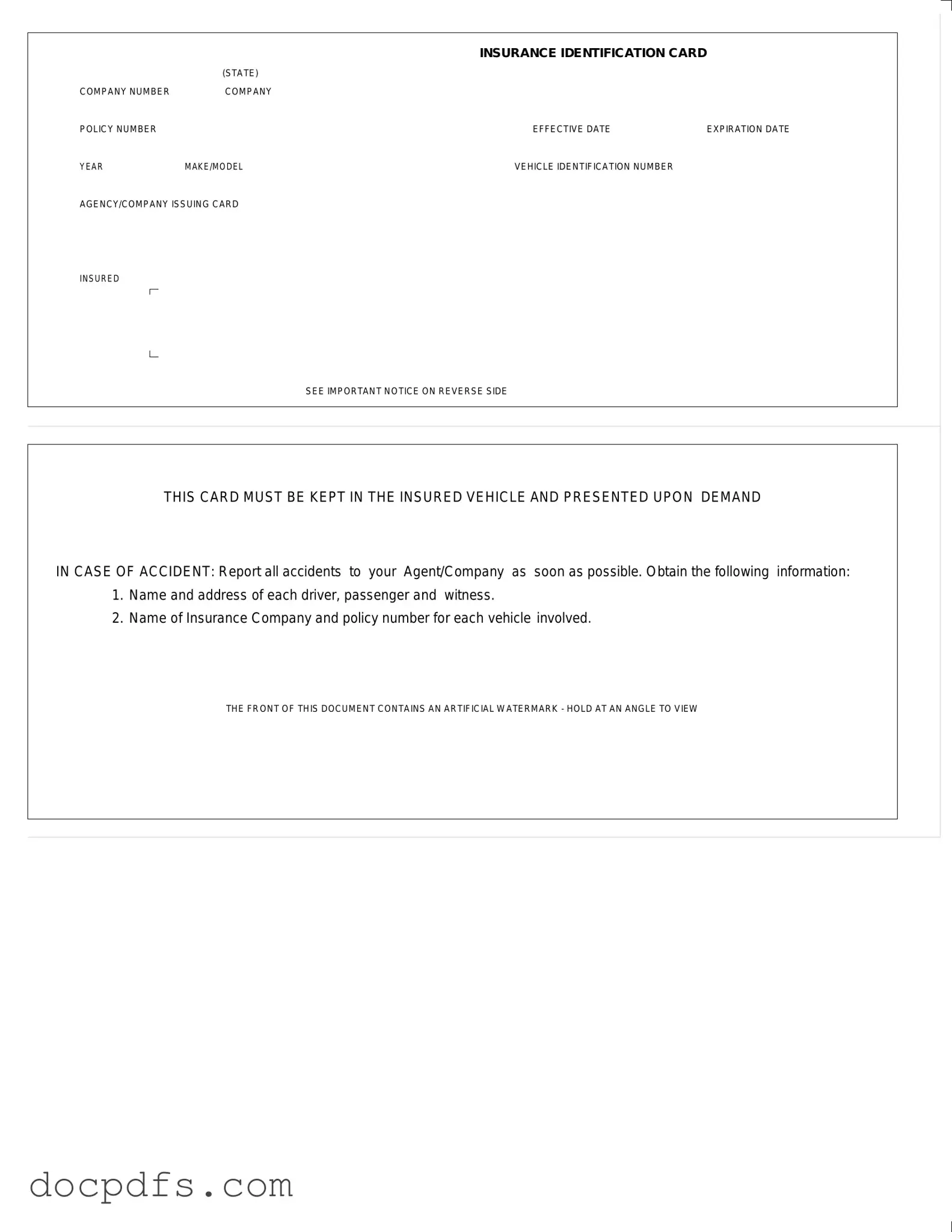The Auto Insurance Card is an essential document for every vehicle owner, serving as proof of insurance coverage while on the road. It contains critical information that not only verifies that a vehicle is insured but also provides important details about the policy itself. Key elements of the card include the insurance company’s identification number, the policy number, and the effective and expiration dates of the coverage. Additionally, it specifies the year, make, and model of the insured vehicle, along with its unique Vehicle Identification Number (VIN). The card is issued by an authorized agency or company, ensuring that it meets state requirements. It is crucial for drivers to understand that this card must always be kept in the insured vehicle and presented upon demand, especially in the event of an accident. In such cases, it is advisable to report the incident to the insurance agent or company promptly and to gather necessary information from all parties involved. For further security, the card features an artificial watermark that can be viewed by holding it at an angle, adding an extra layer of authenticity. This document not only protects the driver but also promotes responsible driving practices by ensuring that all parties are adequately insured.
